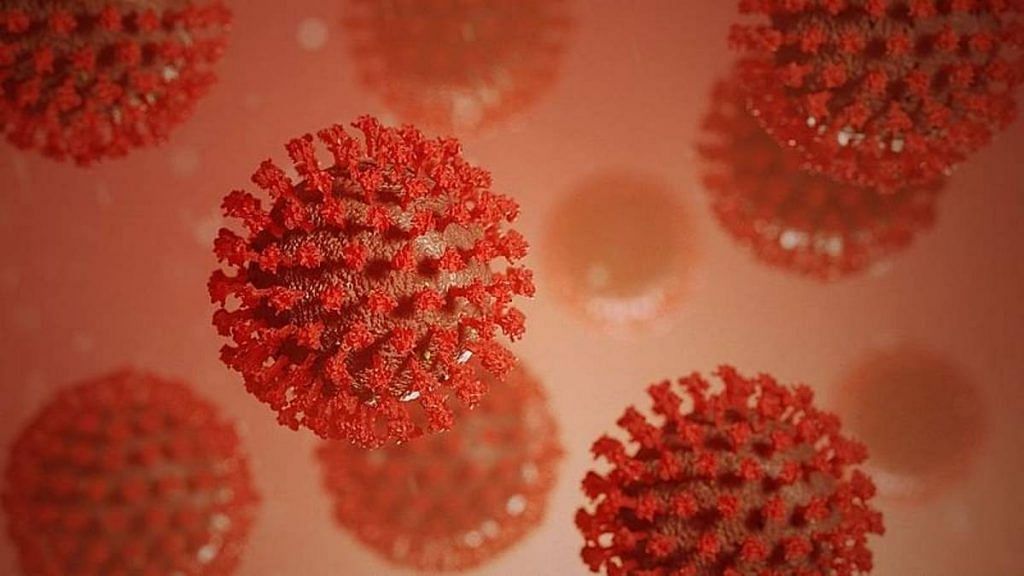Bengaluru: There has been a flurry of news articles about a supposed new SARS-CoV-2 variant, of the name B.1.640.2 or ‘Deltacron’, being reported by a team of researchers in Cyprus. The sequences, which were first reported as early as November last year, have gained renewed attention of late, primarily because of fresh writing on it.
While Cypriot researchers had claimed that the variant contained mutations that appeared to be a combination of Delta and Omicron variants, many virologists globally refute ‘deltacron’ being a variant, stating that it is most likely the result of laboratory contamination.
Some virologists have even taken to Twitter to explain the science behind what might have happened in the Cyprus lab, and how the limited number of sequences available indicates contamination.
A Twitter post Tuesday claimed the Cypriot researcher who had first uploaded the sequences on a collaborative database used by the World Health Organization (WHO), GISAID, has asked them to be removed from the platform.
Contaminated and amplified
Laboratory contamination can occur at any time in any facility owing to mixing of fluids at a microscopic level when sequencing viruses. Contamination of a sequence occurs if it contains fragments from a different sequence, which takes place commonly in labs. It can occur through residues from previous PCR amplifications carried over into the current batch of samples, or when samples are not carefully handled.
Because amplicon 72 of Delta is very poorly picked up, any contamination, even at miniscule levels, will get preferentially amplified (because PCR is an exponential process) and you end up with hybrid sequences.
— Tom Peacock (@PeacockFlu) January 9, 2022
Amplicons are fragments of genome sequences that are used as originals to make copies in amplification processes like PCR. Primers are short, single-strand segments of DNA that attach to regions of the DNA segment that needs to be amplified in these processes. The region called Amplicon 72 is not easily picked up by some primers that are used in PCR processes.
This has previously caused confusions where some mutations in Delta were also not detected by some primers, but were by others.
As a result, when there is even a minor change introduced by contamination during sequencing, which causes it to then get picked up, the changes or contamination get exponentially amplified in the regular PCR process. The resulting sequence makes the original look like a hybrid sequence with characteristics from two different variants.
Phylogenetic trees are visual representations of evolution of the virus, and as the virus branches off into a new variant, subsequent sequences uploaded of the variant fall within the branch, based on characteristics and mutations. With the supposed ‘deltacron’ variant, the sequences are found randomly across multiple trees instead of together like with every other variant.
Ok, #deltacron. Naming conventions are as follows: unusual sequences are sent to @AndrewRambaut to assign a pango lineage and discussed in the WHO TAG VE. Based on properties, new variants may be assigned. These are the GISAID entries for Cyprus. https://t.co/naBgwmpBpL pic.twitter.com/Ky7cz2XS2P
— Marion Koopmans (@MarionKoopmans) January 9, 2022
Furthermore, virologists have also noted that the supposed variant pre-dates Omicron. Its sequences were first uploaded to GISAID back in early November. The first Omicron sequence appeared three weeks later.
But since November, until today, there are a total of only 24 sequences of the B.1.640.2 (‘deltacron’), while there are over 120,000 sequences of the Omicron variant. As a result, experts say that there is no risk from B.1.640.2 yet, as it doesn’t appear to be spreading.
and as @shay_fleishon pointed out there havent been any new sequences uploaded since before Christmas… this virus has had a decent chance to cause trouble but never really materialised (as far as we can tell at least…)
— Tom Peacock (@PeacockFlu) January 3, 2022
Cyprus scientist asks sequences to be removed from GISAID
The Cypriot scientist Leonidos Kostrikis — who had been the first to upload the sequences — and his team have meanwhile reportedly asked GISAID to remove the sequences from their database.
UPDATE: Dr. Kostrikis and the Cypriot team have reached out to GISAID and asked that the sequences that need further investigation be pulled. Mistakes with ARTIC primers CAN happen but “Deltacron” can likely be put to rest now. H/T: @macroliter https://t.co/98VrkUP341
— Chise ???? (@sailorrooscout) January 11, 2022
Kostrikis had previously defended his findings, telling Bloomberg in an interview published Sunday that the cases identified “indicate an evolutionary pressure to an ancestral strain to acquire these mutations and not a result of a single recombination event”.
He had claimed the sequences were also reported from multiple countries including France and Israel, which refute that it’s a technical error.
Detailed analysis of the sequences, in the absence of additional data is, however, indicative of deltacron just being a contamination and not a variant by itself. At the moment, health experts and virologists are not worried about B.1.640.2.
WHO’s Covid technical lead, Maria Van Kerkhove, too, had said Monday that deltacron is likely the result of contamination during sequencing and asked to avoid portmanteaus when commenting on Covid co-infections.
Jumping in late here: Let’s not use words like deltacron, flurona or flurone. Please ?
These words imply combination of viruses/variants & this is not happening. “Deltacron” is likely contamination during sequencing, #SARSCoV2 continues to evolve & see flu co-infection?below. https://t.co/rNuoLwgCzN
— Maria Van Kerkhove (@mvankerkhove) January 10, 2022
(Edited by Poulomi Banerjee)
Also read: ‘IHU’ or B.1.640.2 — the new Covid variant detected in France which has 46 mutations
